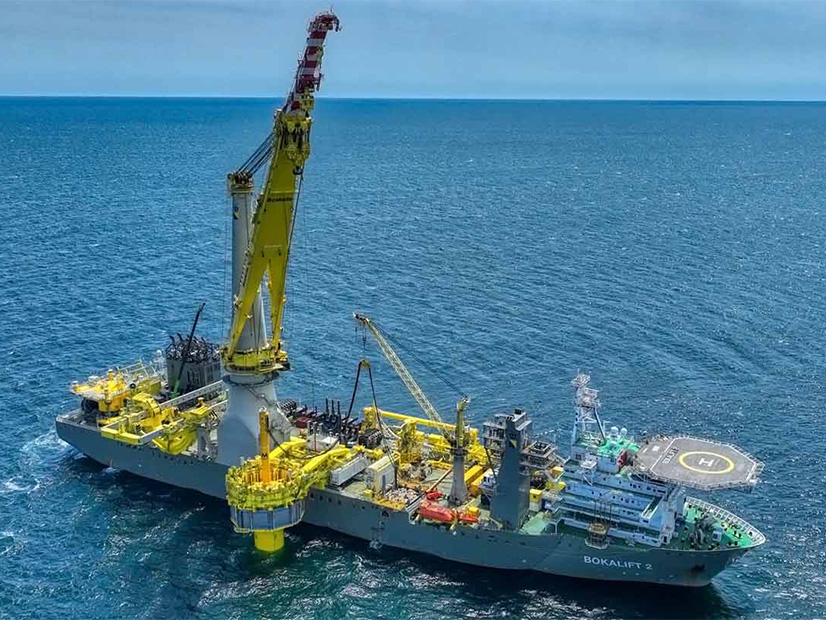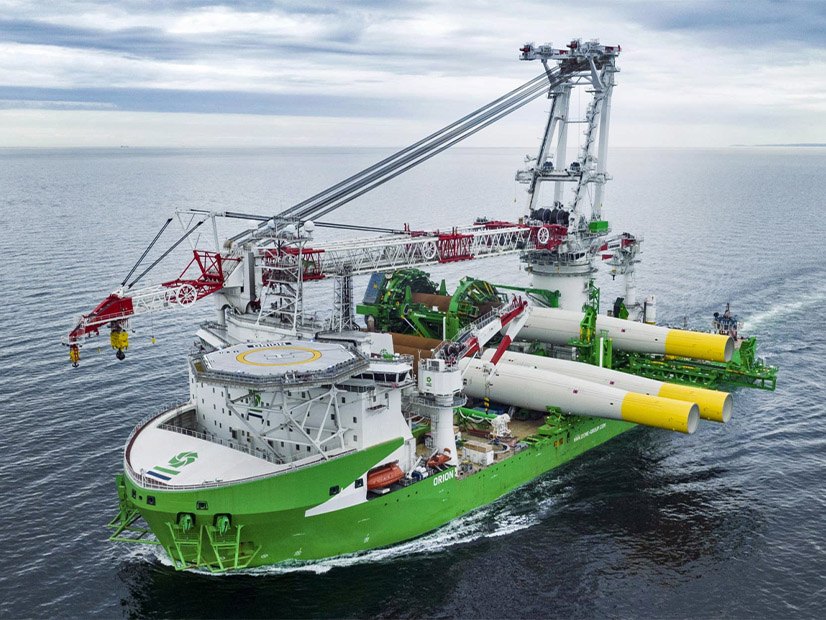
New York announced that the first monopile foundation has been installed for South Fork Wind, a 132 MW project being developed by Ørsted and Eversource off the eastern tip of Long Island.
The two offshore wind farms vying for first-in-the-nation status both now have “steel in the water.”
New York announced Thursday that the first monopile foundation has been installed for South Fork Wind, a 132-MW project being developed by Ørsted and Eversource off the eastern tip of Long Island.
Two weeks ago, installation of the first monopiles and transition pieces began at Vineyard Wind 1, an 800-MW project being developed by Avangrid Renewables and Copenhagen Infrastructure Partners south of Martha’s Vineyard in Massachusetts.
Vineyard and South Fork occupy the same patch of the Outer Continental Shelf south of New England that the Bureau of Ocean Energy Management is developing for emissions-free wind power.
Bokalift 2 is the center of activity on South Fork, supported by a fleet of smaller vessels and onshore personnel.
DEME’s slightly smaller Orion is performing a similar role for Vineyard, also supported by a cast of hundreds.
Work on both began in 2022, and while Vineyard got a two-week head start on actual tower installation, the crews need to erect 62 turbines there, compared with only a dozen at South Fork.
Developers of the two projects and their fans in state government each say that theirs will be the first utility-scale or commercial-scale offshore wind project in U.S. waters; bragging rights presumably would belong to the one that goes online first.
South Fork expects to start producing electricity this year. Vineyard had previously specified a 2023 startup date in its publicity materials but no longer includes any prediction.
An increasingly interesting question is, which wind farm will be the third in U.S. waters?
Developers of three projects comprising 97% of New York’s contracted offshore wind pipeline and two projects comprising 67% of the pipeline in Massachusetts have all said they cannot proceed under the financial terms they agreed to before interest rates and input costs skyrocketed.
They’re seeking to cancel and renegotiate their deals. Whether or not they are successful, project delays and/or higher costs to ratepayers appear likely.
In that sense, being first worked to the advantage of South Fork and Vineyard — they locked in their contracts before costs increased.
New York Gov. Kathy Hochul said in a news release Thursday that South Fork will not only help protect the climate but also help the state develop economically.
“This progress on building the first utility-scale offshore wind project in the country cements New York as a national hub for the offshore wind industry,” she said.
Massachusetts has economic goals similar to New York’s in the offshore wind sector and has set a significantly higher per capita target for gigawatts of offshore wind power.
Massachusetts Gov. Maura Healey on June 7 offered an assessment similar to Hochul’s:
“Our administration is grateful for the important work being done by Vineyard Wind, Avangrid, CIP, DEME and labor partners to bring clean, affordable energy to Massachusetts. We’re thrilled to see this historic project move one step closer to completion and committed to supporting the offshore wind industry across the state.”



